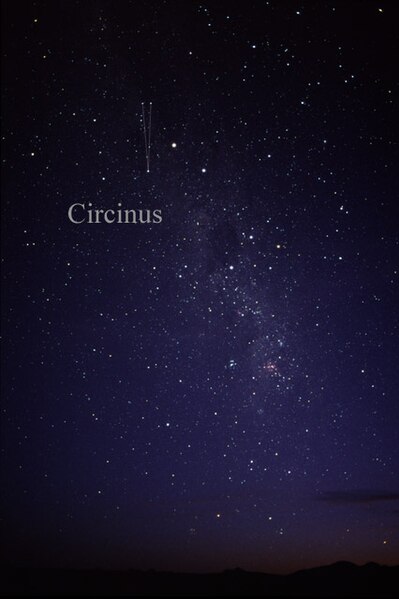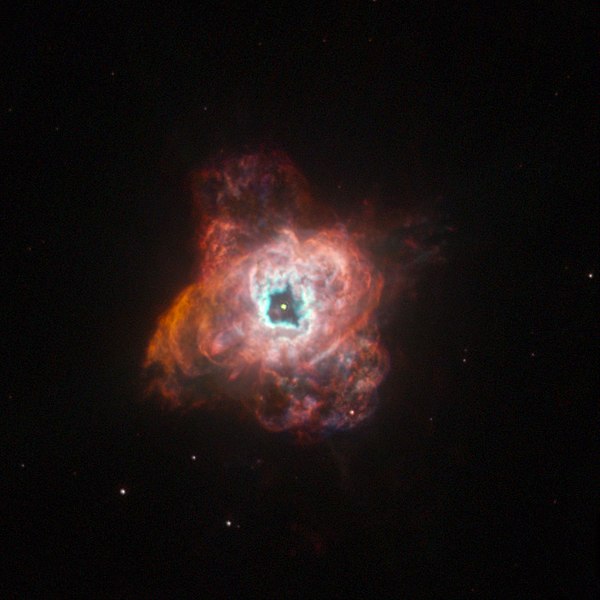Pyxis is a small and faint constellation in the southern sky. Abbreviated from Pyxis Nautica, its name is Latin for a mariner's compass. Pyxis was introduced by Nicolas-Louis de Lacaille in the 18th century, and is counted among the 88 modern constellations.
The constellation of Pyxis, the compass, as it can be seen by the naked eye
Hubble Space Telescope picture of T Pyxidis, showing ejected material from past eruptions
The planetary nebula NGC 2818, imaged by the Hubble telescope
Circinus is a small, faint constellation in the southern sky, first defined in 1756 by the French astronomer Nicolas-Louis de Lacaille. Its name is Latin for compass, referring to the drafting tool used for drawing circles. Its brightest star is Alpha Circini, with an apparent magnitude of 3.19. Slightly variable, it is the brightest rapidly oscillating Ap star in the night sky. AX Circini is a Cepheid variable visible with the unaided eye, and BX Circini is a faint star thought to have been formed from the merger of two white dwarfs. Two sun-like stars have planetary systems: HD 134060 has two small planets, and HD 129445 has a Jupiter-like planet. Supernova SN 185 appeared in Circinus in 185 AD and was recorded by Chinese observers. Two novae have been observed more recently, in the 20th century.
The constellation Circinus as it can be seen by the naked eye.
An astrophotograph of NGC 5823, showing its backwards S shape
Hubble Space Telescope's view of NGC 5315, showing its intricate structure and central star






